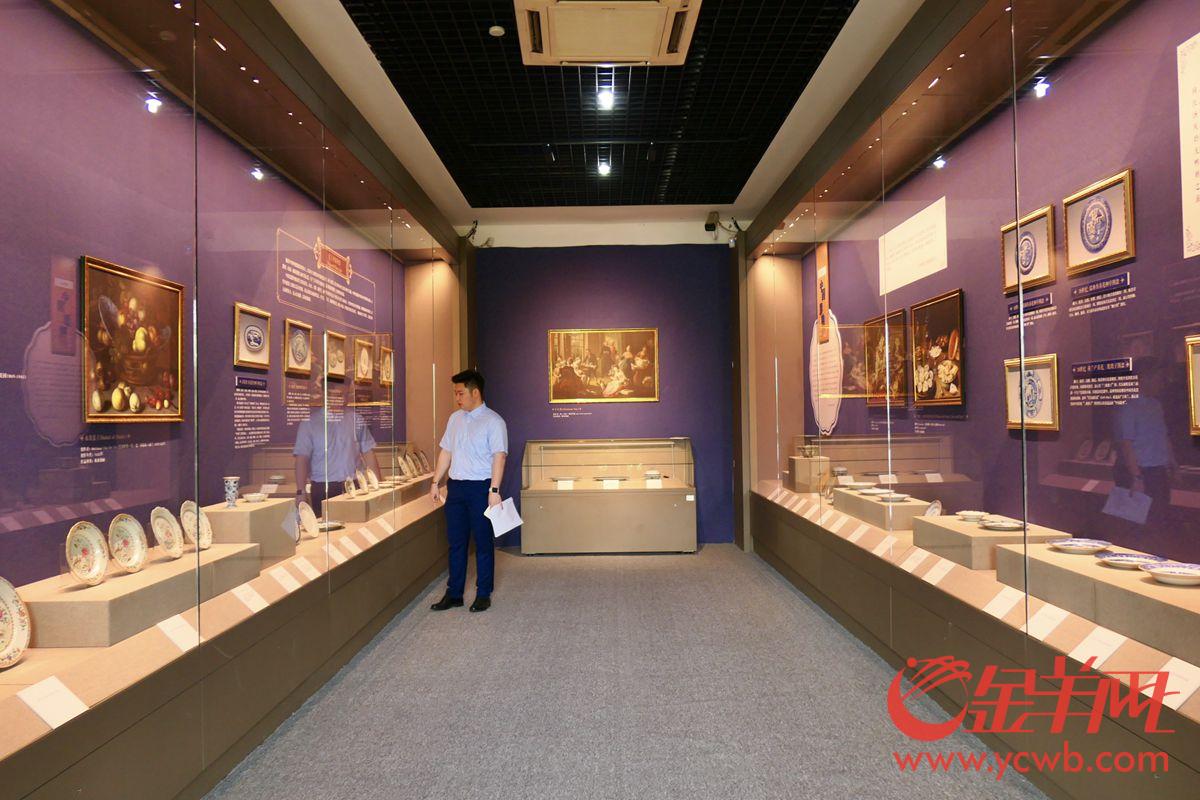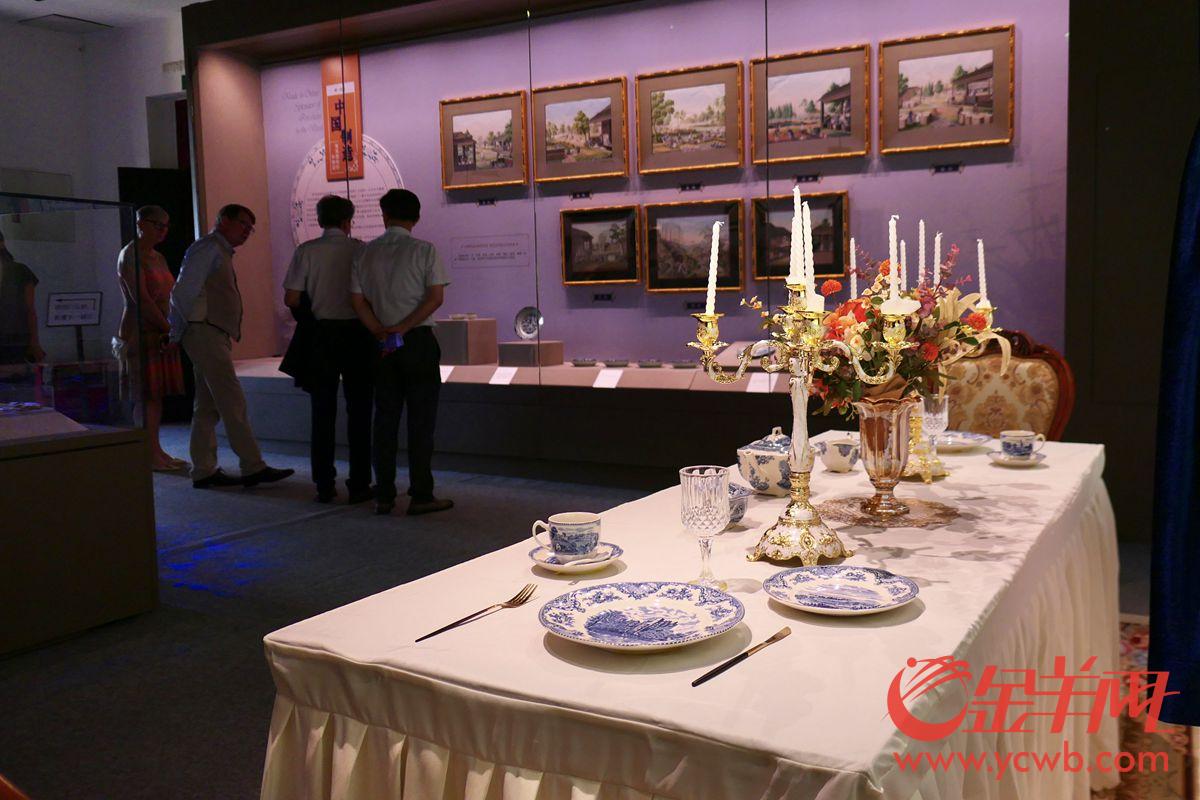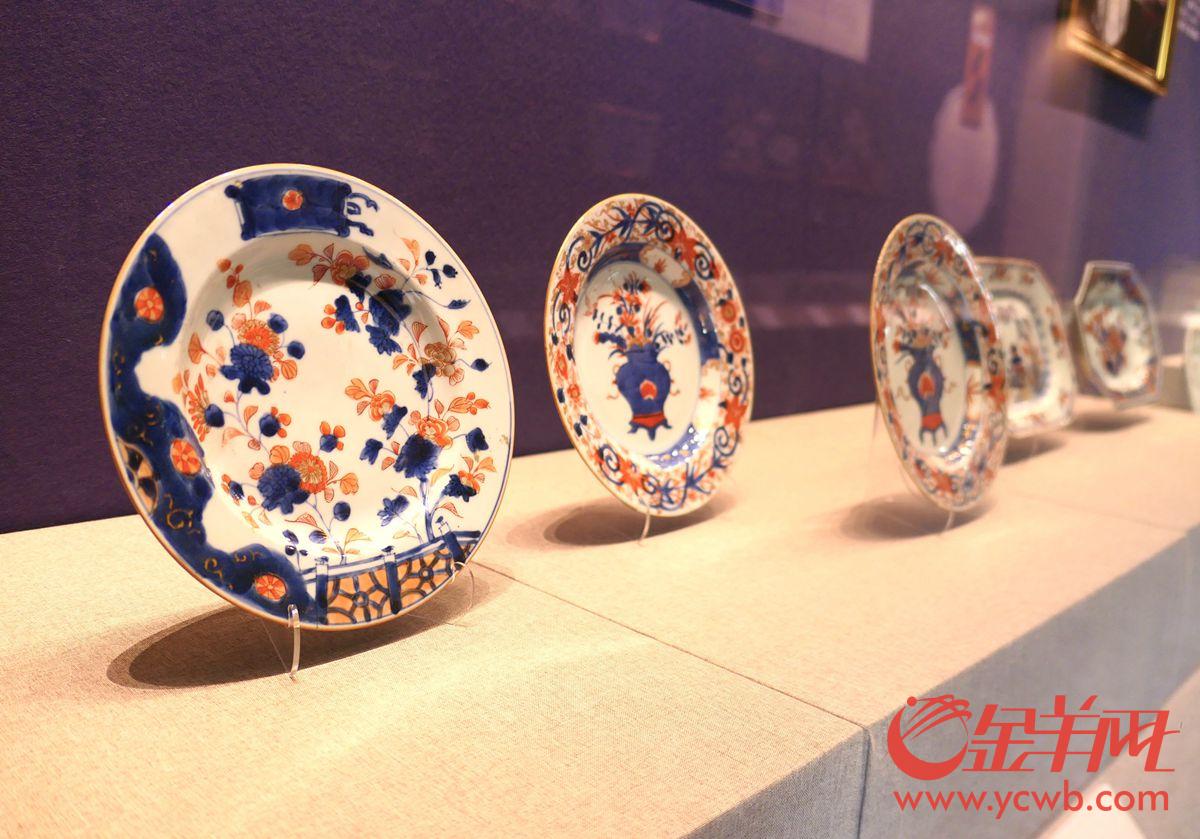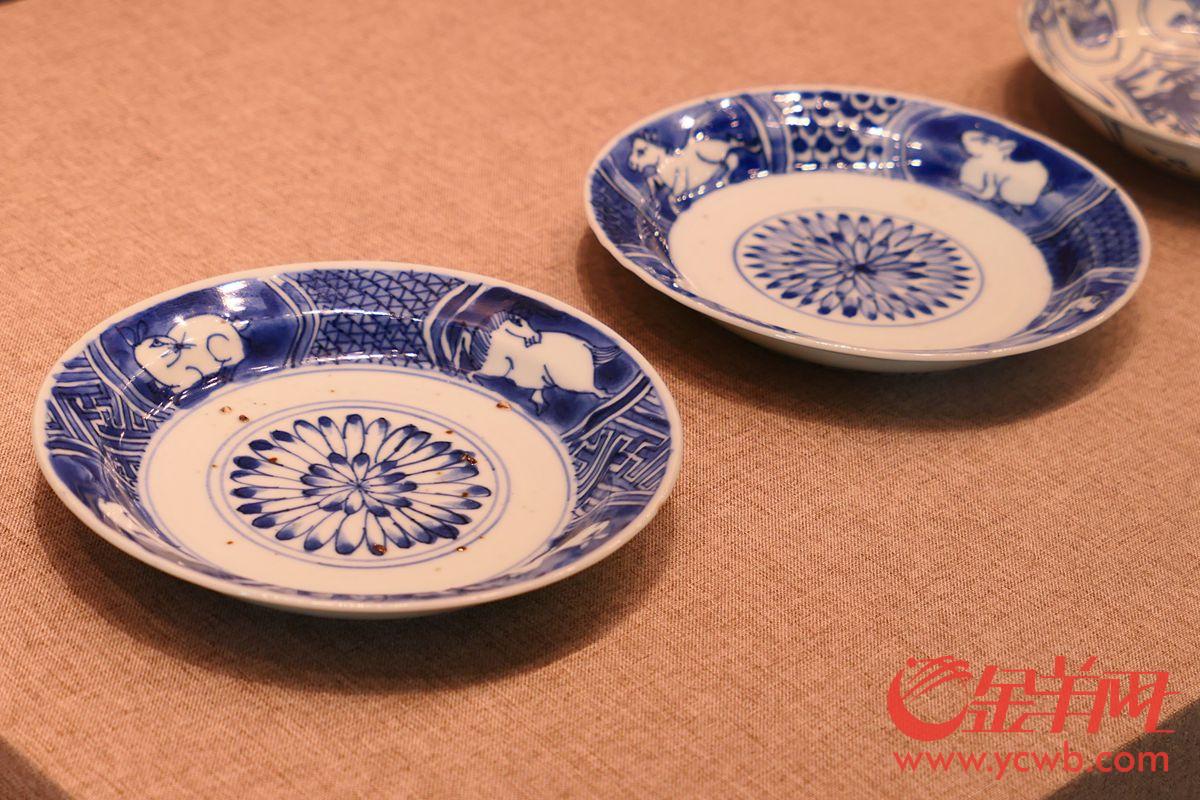Source: Yangcheng Evening News Yunshang Lingnan
Author: Huang Zhouhui, Zhou Xia
Published at 09:10, May 17, 2024

The Yangcheng Evening News reporter Huang Zhouhui and correspondent Zhou Xia reported that the blue and white Guangzhou city map plate of the Qianlong period of the Qing Dynasty, the western customized "Anna" flower pattern pastel porcelain plate in the middle of the Qing Dynasty, and the blue and white cock fighting map plate of the Qianlong period of the Qing Dynasty... These exquisite pieces of export porcelain appeared in the exhibition cabinet, showing the audience the Chinese wisdom gathered in them, which is amazing.
On the eve of the International Museum this year, the "Chinese Wisdom - Porcelain for Export Affecting China" jointly organized by Sun Yat sen's Grand Admiral's Mansion Memorial Hall (hereinafter referred to as "the Mansion Memorial Hall") and Beijing Jiguge Art Co., Ltd. was displayed in the Mansion Memorial Hall on May 16. A total of 108 pieces/set of Chinese porcelain were exhibited in this exhibition, mainly during the Ming and Qing dynasties. In addition, various porcelains produced in Sweden, Britain, France, the Netherlands, Portugal and other countries were also exhibited. These porcelains include blue and white porcelain, Clark porcelain, Ivanli porcelain, pastel porcelain, and wide color porcelain.

Porcelain promotes trade and cultural exchanges between China and Europe
Guangzhou is a shining pearl on the coast of the South China Sea. From 1757 to 1841, more than 80 years ago, Guangzhou stood out with its unique position of "one port for trade" on the sea, becoming an important gateway for the trade of goods between the East and the West. A large number of handicrafts such as porcelain, which gathered Chinese wisdom, went from here to Europe, America and the world.
"China's export of porcelain has not only changed the living habits of Europeans, but also brought about the aesthetic collision between Chinese and European people, as well as the sharing of civilizations." The exhibition curator said that since the Tang and Song dynasties, Chinese and foreign merchant ships have set sail from Guangzhou, carrying countless Chinese porcelain to Southeast Asia, West Asia, Africa, the European continent and other places. These export porcelains, such as fireflies and starlights, and breezes and drizzle, decorate the lives of Westerners with the beauty of refreshing colors, exquisite shapes, and ingenious patterns, and deeply affect and change their lives. The massive export of Chinese porcelain, which embodies Chinese wisdom, not only increases China's foreign exchange income, but also promotes trade and cultural exchanges between China and Europe.

Multi angle display of the impact of export porcelain on European life
This exhibition is divided into three parts: "Made in China: Export Porcelain from East to West", "China's Contribution: Export Porcelain and European Life", and "China's Influence: the Rise of European Porcelain".
Among them, the first part, "Made in China: porcelain exported from the east to the west", focuses on eight large size paper watercolours and a volume of grass paintings for export, introducing the production process of Chinese porcelain; There are also five precious oil paintings and a panoramic perspective of Guangzhou City in 1759 (paper watercolor). This part shows the historical grand occasion of Chinese export porcelain sailing to sea in Guangzhou.
The second part, "China's contribution: export porcelain and European life", introduces the influence of Chinese export porcelain on European dining habits and life aesthetics from two aspects of practical porcelain and furnishings porcelain through the two links of "enriching their tables" and "decorating romantic life"; Through the section of "Fall in love with Chinese customs", the history of European custom making and processing of Chinese porcelain was introduced, showing a new scene of the convergence, integration and collision of Chinese and Western cultural aesthetic tastes against the backdrop of the prosperity and development of Chinese and foreign trade.
The relevant person in charge of the Shuaifu Memorial Hall said that he hoped to use the image of this exhibition to explain the history of foreign trade of Guangzhou ports in the 18th and 19th centuries, and to show the grand scene of participation of export porcelain that condensed Chinese wisdom and affected European life from multiple perspectives.












